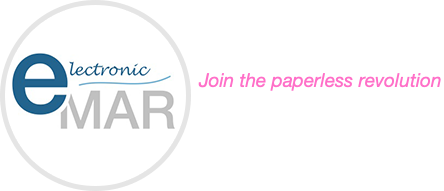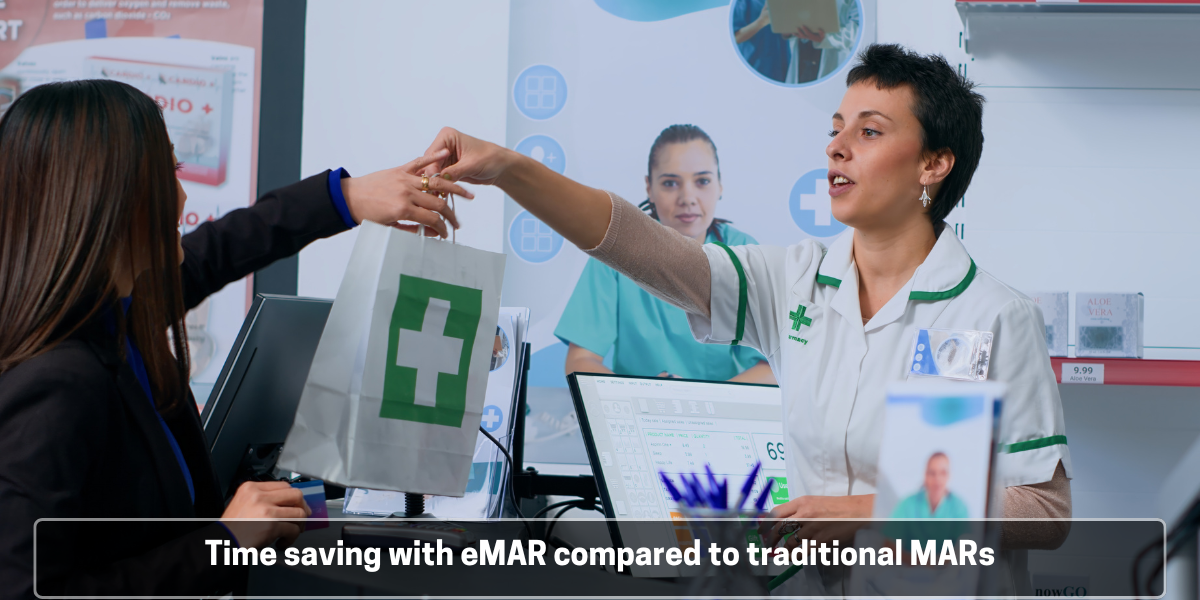Nurses and care home staff often work under constant pressure. Alongside their core duties, they must ensure that each patient receives the correct medication at the right time. In such busy environments, traditional paper-based Medication Administration Records (MARs), can become a burden. They are time-consuming to manage, prone to human error, and challenging to maintain, especially during hectic shifts.
To solve these challenges, many care homes and healthcare facilities across the UK have adopted the electronic Medication Administration Record (eMAR) system. This digital solution replaces the manual, paper-based MARs with an efficient, accurate, and accessible alternative. By simplifying the medication process, eMAR not only reduces errors but also saves valuable time for clinical staff.
Here’s how eMAR systems make a meaningful difference in everyday care home operations.
1. Elimination of Paperwork
One of the most immediate benefits of eMAR is the removal of manual paperwork. In traditional MARs, staff must handwrite each medication entry, a task that can quickly pile up during busy shifts. With eMAR, the process is automated. As soon as medication is administered, the system records the action instantly.
There’s no need for handwritten entries, no concerns about legibility, and no missing data. Staff simply select the medication from the system, confirm administration, and the record updates in real time. This not only speeds up documentation but also improves accuracy across the board.
2. Instant Access to Patient Records
In a fast-paced care environment, quick access to up-to-date patient records is essential. With traditional paper MARs, staff has to sift through physical charts, which can take up unnecessary time, especially when dealing with multiple residents.
With eMAR, all medication records are stored digitally. Staff can access them instantly from any approved device. A patient’s full medication history, allergy information, and dosage schedule are available within seconds. This streamlined access frees up time that would otherwise be spent searching through paperwork—and allows staff to focus more on patient interaction.
3. Real-time Updates and Smoother Shift Handovers
Shift handovers are a critical point in the medication process. In a traditional setup, nurses may rely on verbal updates or handwritten notes to pass on information. This method increases the risk of miscommunication and often requires extra time to ensure clarity.
eMAR systems update in real time, which means all staff members can view the latest information without delay. During handovers, nurses can quickly review the digital log, verify what has already been administered, and identify any pending doses or concerns. This improves continuity of care and shortens handover times.
5. Faster Communication with Doctors and Pharmacists
In many cases, nurses must consult with doctors or pharmacists to clarify prescriptions or adjust treatment plans. In a traditional system, this process may involve phone calls, waiting for faxes, or chasing up written approvals—often causing delays.
eMAR simplifies this communication. Everyone involved in the medication process can access the same system. Notes, updates, and approvals can be added in real time, making coordination faster and more efficient. When changes to medication are needed, staff can implement them immediately with the correct oversight, saving time and reducing the risk of delays in treatment.
6. Improved Reporting and Compliance
Compliance with regulatory standards is vital in any care home. Audits, inspections, and internal reviews all require accurate medication records. In a paper-based system, gathering these records can take hours and often involves sorting through stacks of files.
eMAR makes this process much easier. The system automatically generates reports that meet regulatory requirements. Auditors can access accurate logs without staff having to manually compile documents. Automated compliance checks also help staff stay aware of any gaps or inconsistencies in medication records, reducing the risk of penalties and improving overall care quality.
Switching from a paper MAR to an eMAR system is not just a digital upgrade—it’s a transformation in how care is delivered. eMAR systems streamline medication administration, reduce errors, improve compliance, and, most importantly, save time.







